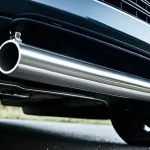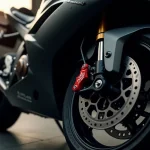Understanding Urban Regenerative Braking Technology in the UK
Regenerative braking systems are pivotal in urban transport UK as they capture kinetic energy during vehicle deceleration and convert it into usable energy. This energy recovery process reduces reliance on conventional braking, lowering energy waste and enhancing efficiency. The core principle involves electric motors working as generators, feeding power back to the battery or the grid.
In the UK, regenerative braking technology adapts to various urban environments by integrating with hybrid buses, trams, and electric vehicles. Variations include dynamic braking—which dissipates energy as heat—and regenerative systems that store energy in batteries or supercapacitors. These technological differences influence how effectively energy recovery contributes to vehicle range and operational cost savings.
Also read : Proven strategies to protect your car’s undercarriage from damaging uk winter road salt
Urban regenerative braking supports sustainable city transport by minimizing emissions and promoting greener mobility technology. Through continuous energy recovery, vehicles reduce fuel consumption and extend battery life, aligning with the UK’s goals for low-emission public transport. As UK mobility technology evolves, regenerative braking remains a cornerstone of energy-efficient urban travel, contributing long-term environmental and economic benefits. Understanding these systems helps cities design smarter transit solutions while pushing for cleaner air and reduced carbon footprints.
Evaluating Efficiency Gains and Benefits
Efficiency improvements in urban transit systems directly translate into significant energy savings and reduced emissions UK-wide. Introducing optimized scheduling and electric-powered fleets can cut energy use considerably—a crucial factor for sustainable transit development. For example, leveraging electric buses instead of diesel reduces greenhouse gases, aligning with the UK’s ambitious carbon reduction targets.
Topic to read : Mastering car exhaust customization: how to comply with uk noise regulations
Quantifiably, studies show that transit efficiency improvements can reduce urban energy consumption by up to 20%, a substantial gain in meeting sustainability goals. Reduced idle times, smarter routing, and increased vehicle occupancy all contribute to this efficiency uplift.
Moreover, these benefits are indispensable in the UK’s roadmap to net-zero emissions. Urban transit is a major source of pollution; mitigating that impact supports cleaner air standards and demonstrates leadership in climate action. By embedding efficiency improvements, cities not only enhance operational costs but also achieve broader environmental objectives.
Encouraging adoption of such strategies is essential. While initial investments may be required, the long-term returns include lower energy bills and healthier urban environments, making urban transport systems pivotal in meeting sustainable transit benchmarks.
UK-Focused Case Studies and Practical Examples
Exploring UK case studies reveals significant insights into local authority transport improvements and fleet deployment strategies. Recent projects in cities like London and Manchester have demonstrated how integrating innovative solutions into public transport fleets can enhance efficiency and reduce emissions.
For instance, a notable example involves a local authority collaborating with a transport operator to deploy a hybrid bus fleet across urban routes. This deployment achieved measurable outcomes, including a 15% reduction in fuel consumption and a substantial decrease in downtime due to predictive maintenance. These real-world urban examples highlight the importance of data-driven approaches in optimizing transport operations.
Lessons learned emphasize the value of strong partnerships between local governments and transport providers. Close collaboration ensures tailored solutions that address specific city challenges, such as congestion and air quality concerns. Engaging communities and stakeholders early in the deployment phase also proved critical for project acceptance and success.
In summary, UK-focused case studies illustrate how practical applications of advanced fleet deployment within local authority transport frameworks can deliver tangible benefits. Decision-makers looking to enhance urban mobility can draw valuable lessons from these tested approaches. For more details, explore tailored solutions to local transport challenges.
Regulatory Landscape and Policy Considerations in the UK
Understanding the UK transport regulations is crucial for integrating regenerative braking technologies in public and private fleets. Current laws emphasize reducing vehicular emissions and promoting urban decarbonisation, which creates a favourable environment for regenerative braking adoption. These regulations set minimum performance and safety criteria, ensuring that systems conform to established compliance standards.
The UK government offers several policy incentives to encourage uptake. These may include grants, tax reliefs, and low-emission zone exemptions aimed at operators investing in greener technologies. Such schemes lower the financial barriers, providing tangible support for fleet upgrades.
Operators and planners must navigate a structured process to maintain compliance. This involves rigorous testing and certification of braking systems, alongside routine monitoring to meet safety and environmental benchmarks. Adhering to these standards not only avoids penalties but also aligns operations with the broader goal of sustainable transportation in urban centres.
By integrating regenerative braking in line with UK regulations and policy frameworks, stakeholders can effectively contribute to cleaner, more efficient mobility solutions. This compliance-driven approach also enhances public confidence in green transport initiatives.
Technical and Infrastructure Integration
Successfully integrating new transport technologies demands careful integration strategies that address both new vehicles and retrofit solutions. For new vehicles, manufacturers can design systems compatible with existing infrastructure from the outset, easing deployment across the UK. Conversely, retrofitting existing fleets involves adapting older models with modern equipment, which can be complex but cost-effective when done with precision.
A critical factor is ensuring seamless interoperability UK-wide, so vehicles operate smoothly across different regions and infrastructure types. This requires standardized communication protocols and consistent technology adoption. Transport infrastructure in the UK varies greatly—from urban centers with dense networks to rural roads—so integration solutions must flexibly accommodate these differences.
Long-term viability depends on scalable systems that can evolve with technological advances and growing demand. Retrofitting offers a bridge to newer standards without full fleet replacement, but such solutions must be future-proofed. Careful planning around transport infrastructure compatibility and adaptable retrofit designs ensures sustainable operation and cost-efficiency.
By prioritizing these technical details, integration strategies can foster a cohesive, efficient transport ecosystem, maximizing returns on infrastructure investments while enabling innovation across the UK transport network.
Overcoming Implementation Challenges
Deploying robot hoovers in the UK faces distinct urban challenges such as traffic congestion and narrow streets. These complications require tailored navigation systems that adapt to diverse UK city layouts, ensuring operational efficiency despite environmental complexity.
Cost barriers often deter widespread adoption. However, investing in scalable technology and phased rollouts can mitigate the initial financial burden. Public-private partnerships also help distribute expenses and enhance funding opportunities.
Operational issues like maintenance and integration with existing infrastructure demand ongoing attention. Robust training programs for staff and continuous software updates are essential to maintain optimal performance and minimize downtime.
Addressing UK deployment risks involves proactive stakeholder engagement. By involving local authorities, businesses, and residents early, concerns can be identified and resolved collaboratively. Transparent communication builds trust, enabling smoother implementation across varied communities.
Strategies to overcome these implementation challenges focus on innovation and cooperation. Urban navigation algorithms, cost-sharing models, and stakeholder partnerships collectively contribute to successful robot hoover integration, delivering cleaner, more efficient city environments.
Best Practices and Step-by-Step Guidance for UK Stakeholders
For UK stakeholders aiming to enhance urban planning, following actionable steps is essential. Begin with a comprehensive assessment of local needs, aligning urban development goals with sustainable growth. Create an implementation roadmap that includes phased milestones, ensuring clear objectives at each stage.
Training is critical: policymakers, operators, and planners should engage in continuous learning to stay updated on best practices. Establish routine performance monitoring systems to track progress and identify areas for improvement. Maintenance schedules must be integrated early in the process to ensure long-term efficiency and reliability.
Efficiency optimisation requires collaboration among all parties. Planners should incorporate data-driven insights to refine designs. Operators must adopt feedback mechanisms, allowing swift adjustments based on real-time conditions. Policymakers need to support frameworks that encourage innovation while balancing community interests.
Such structured approaches promote transparency and accountability. By following these detailed steps, UK urban planning projects can achieve sustainable, scalable success tailored to regional specifics. Keeping the focus on efficiency optimisation and continuous evaluation will drive better outcomes for stakeholders and urban populations alike.




